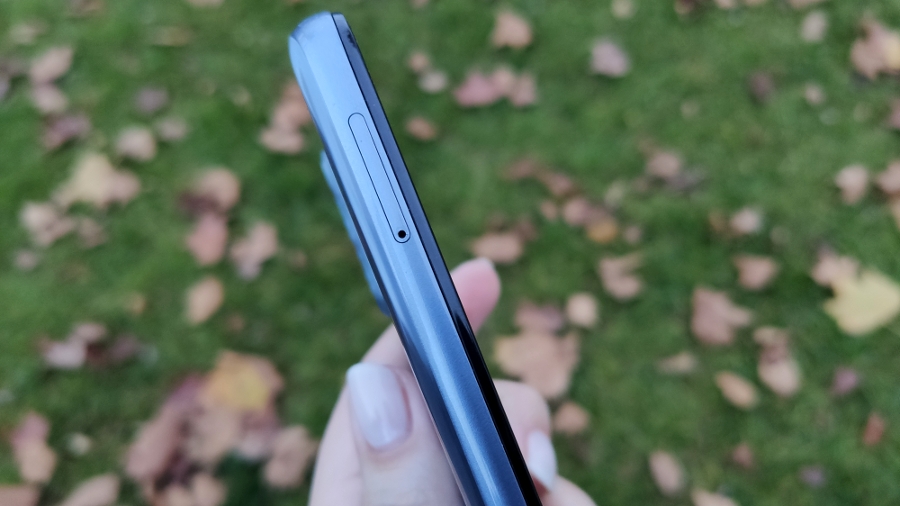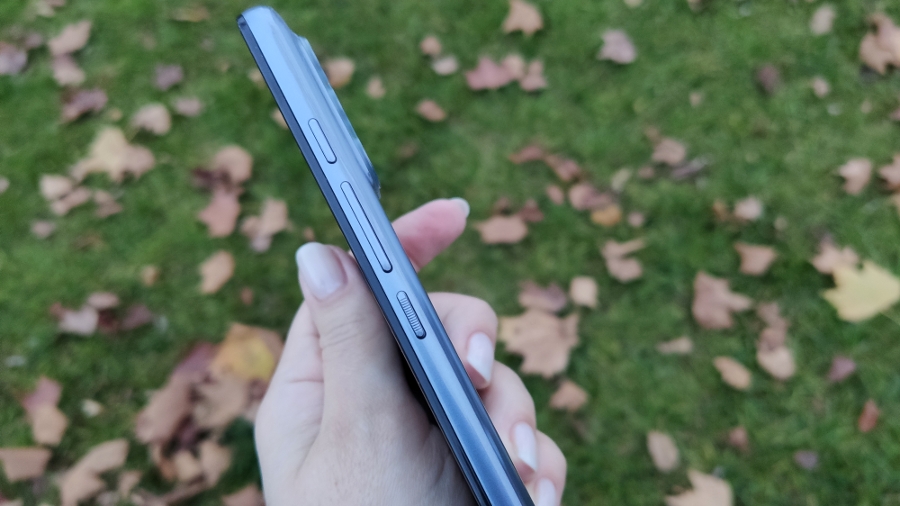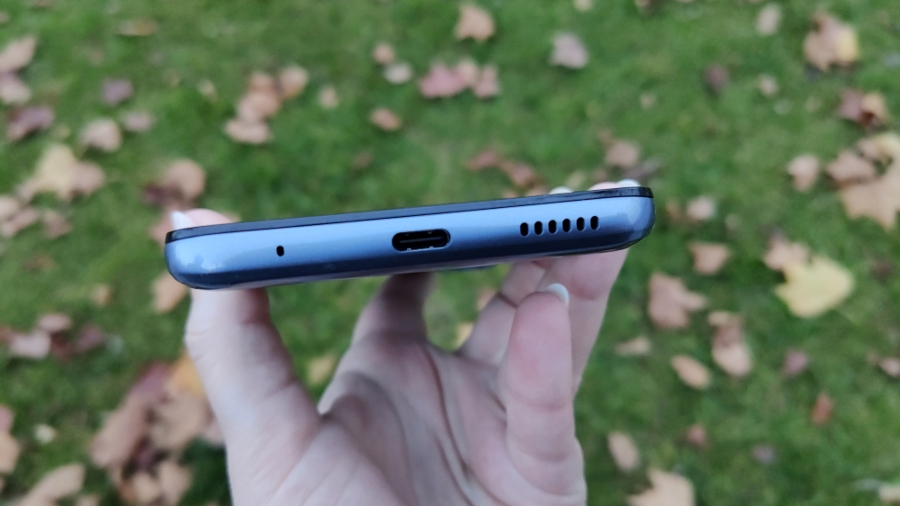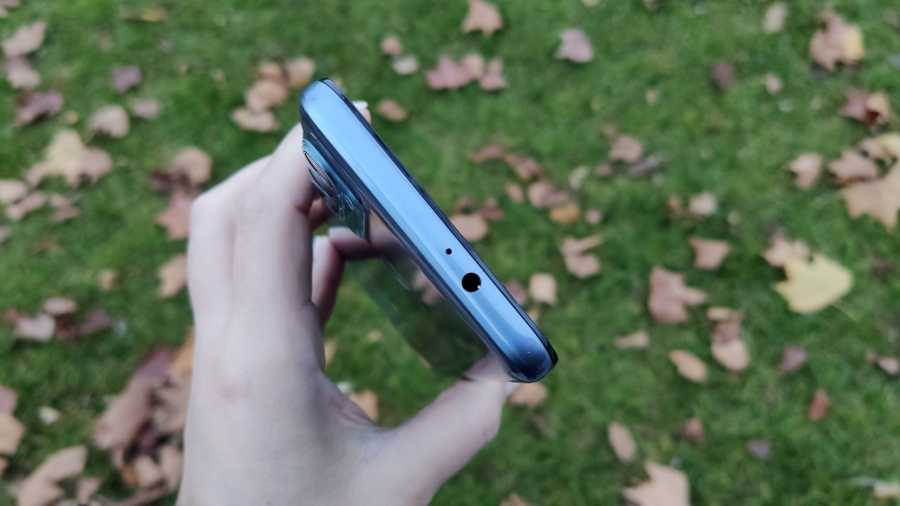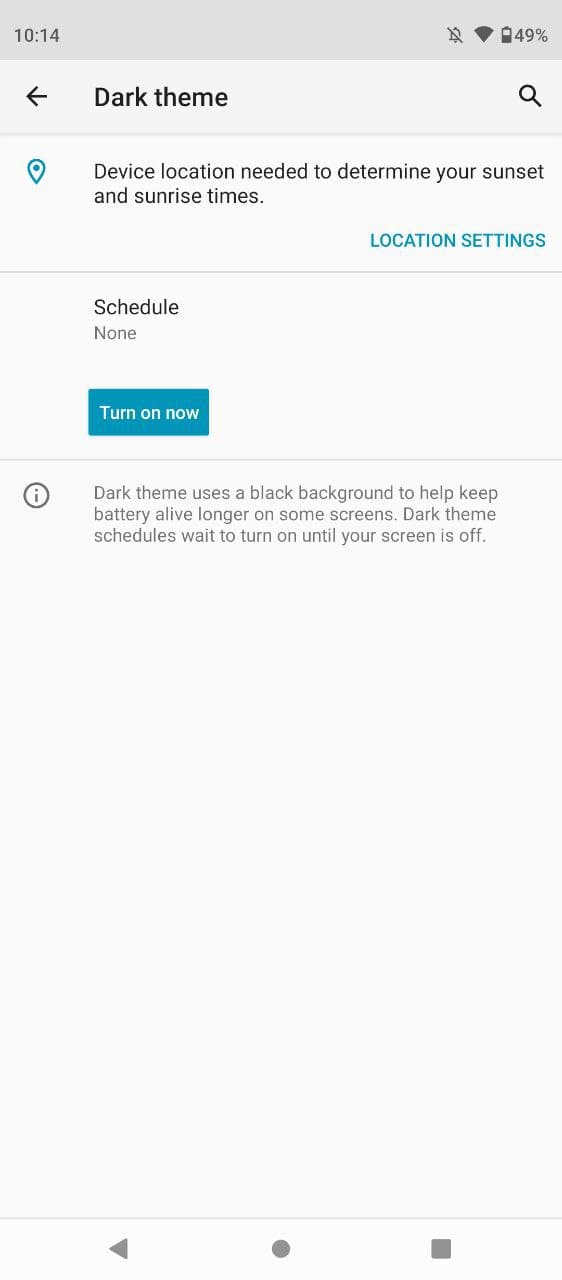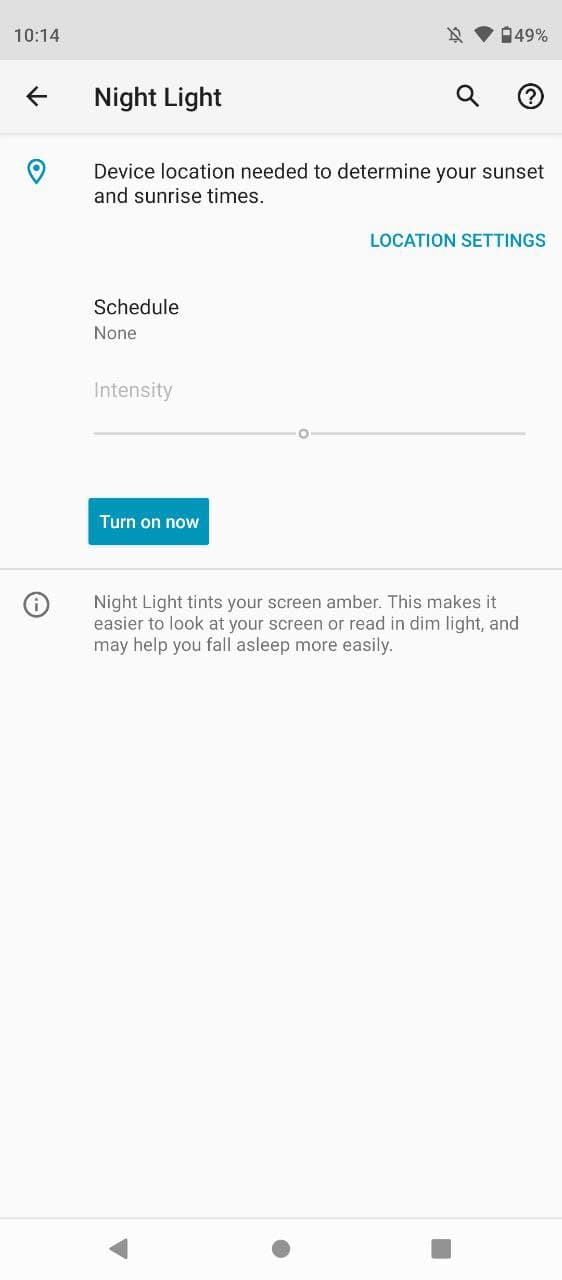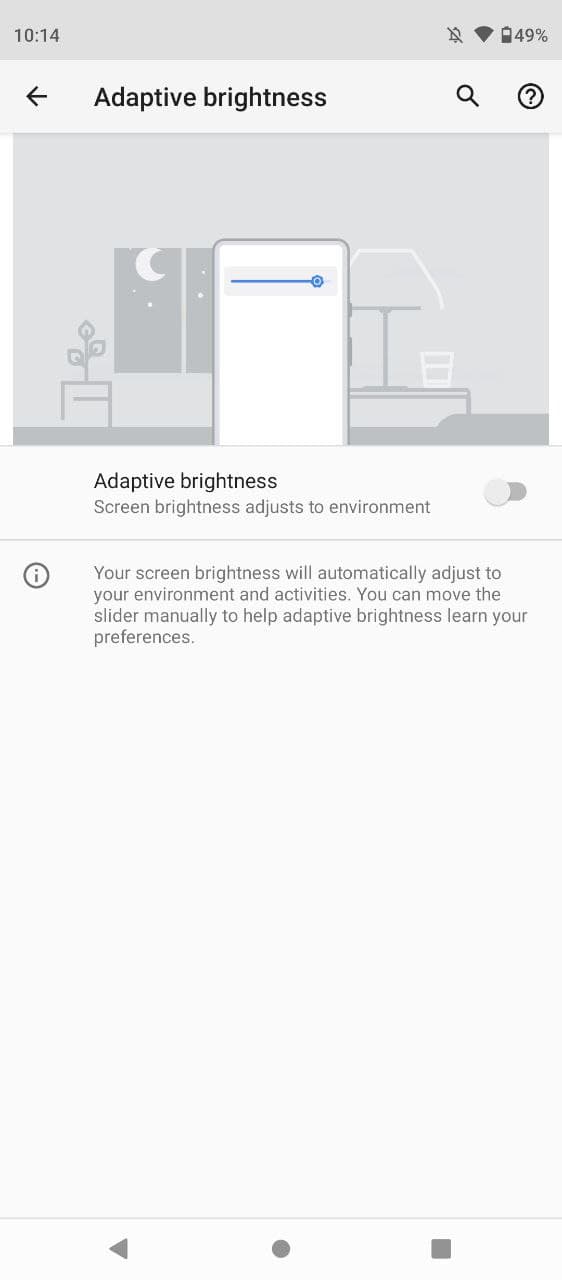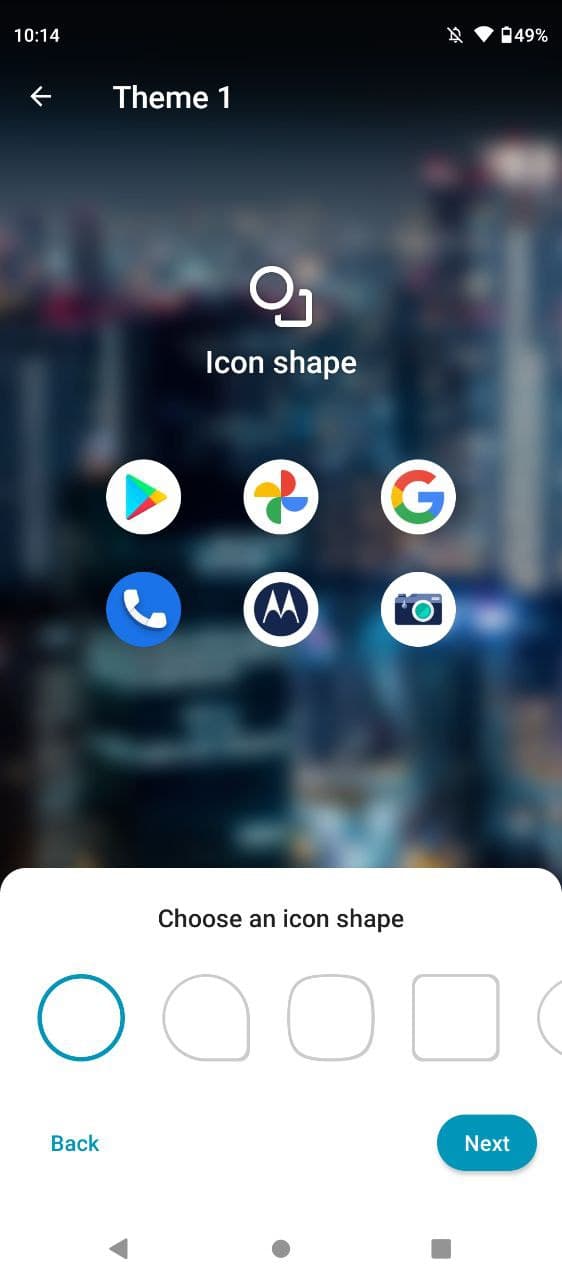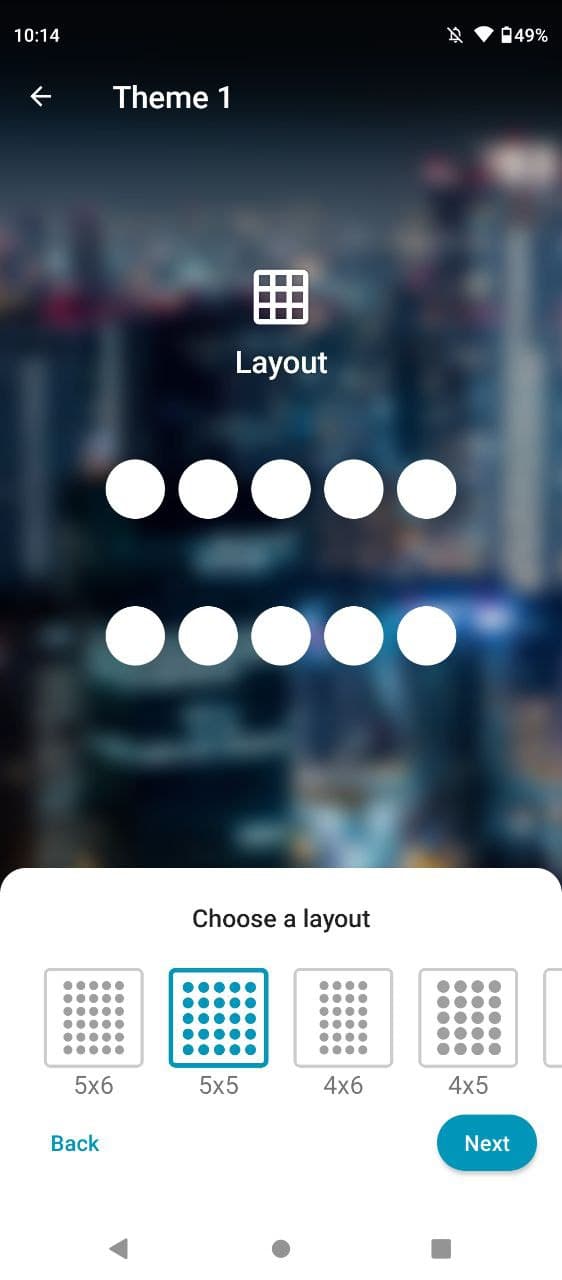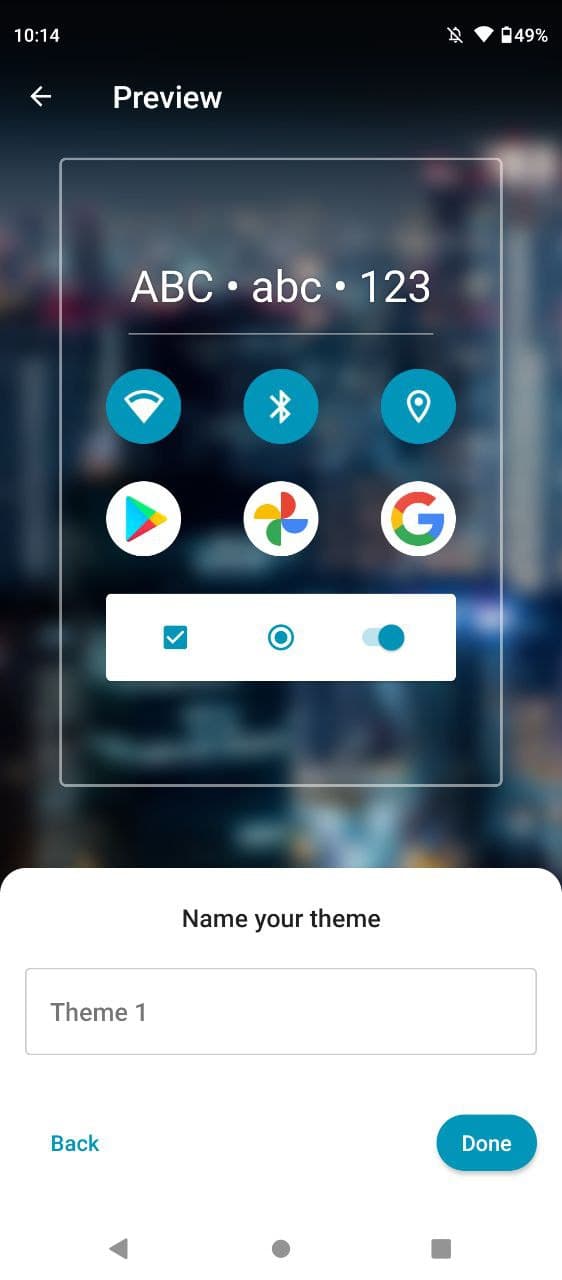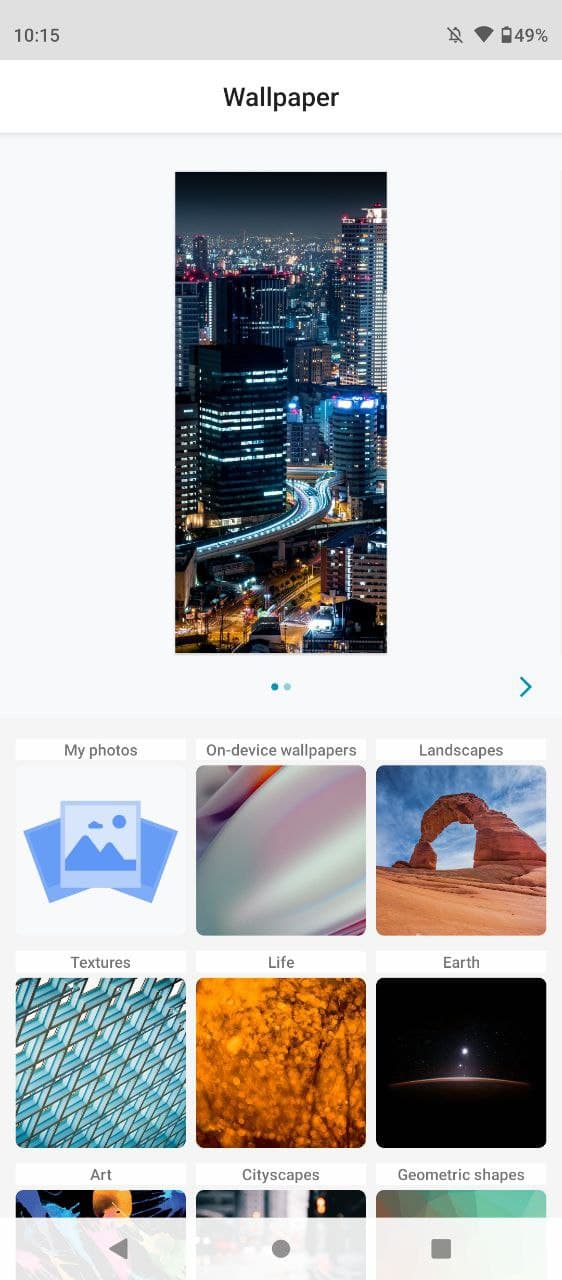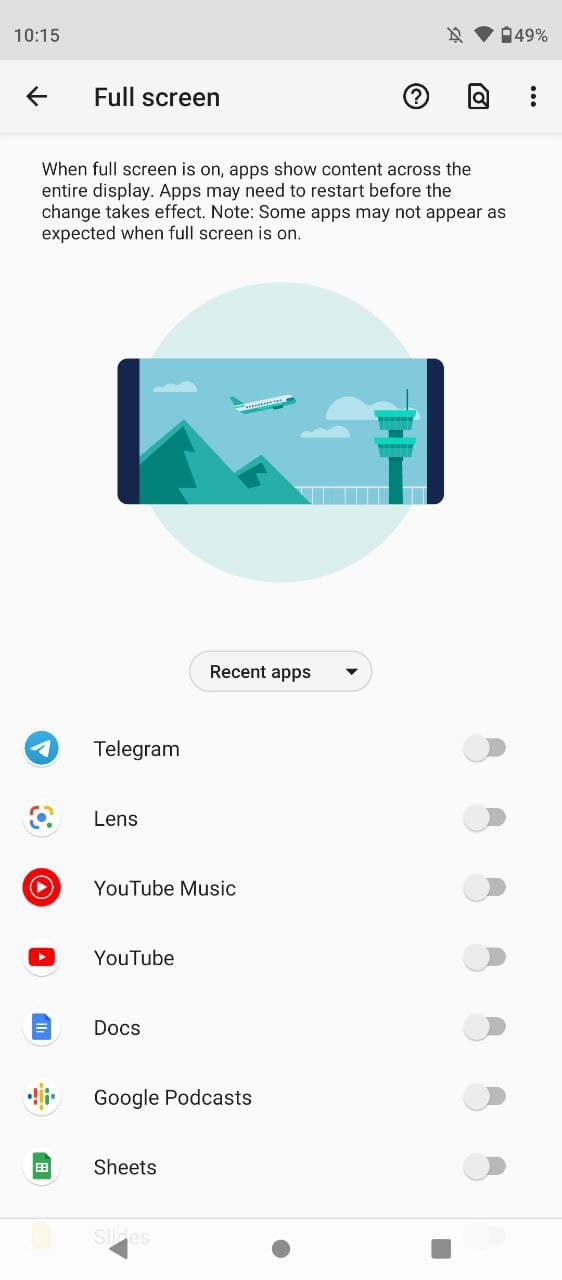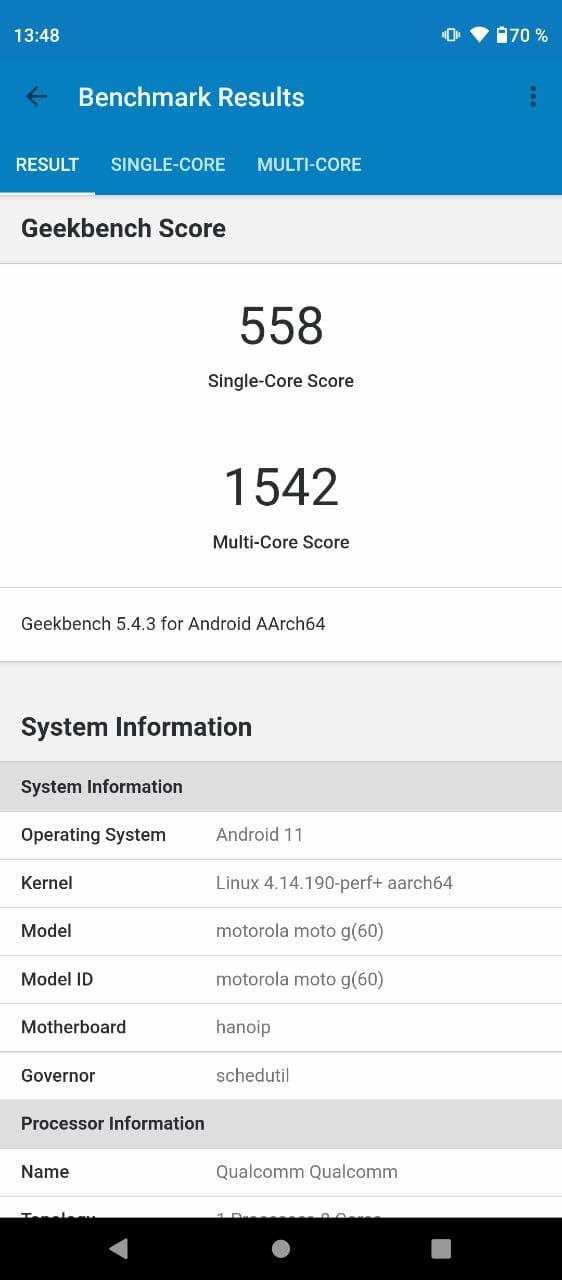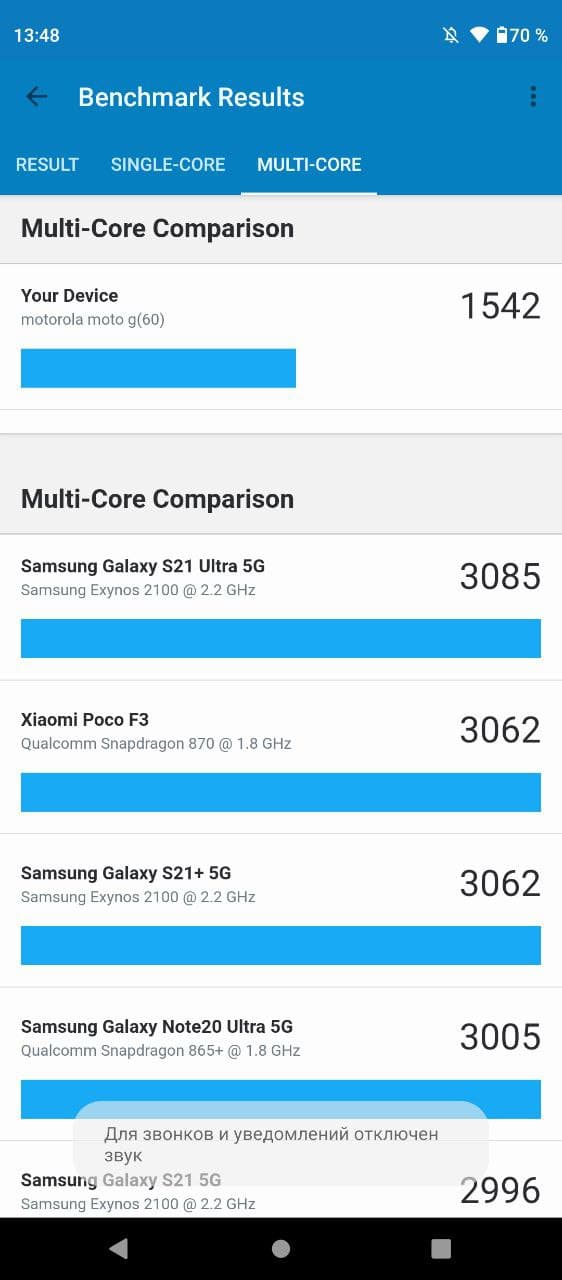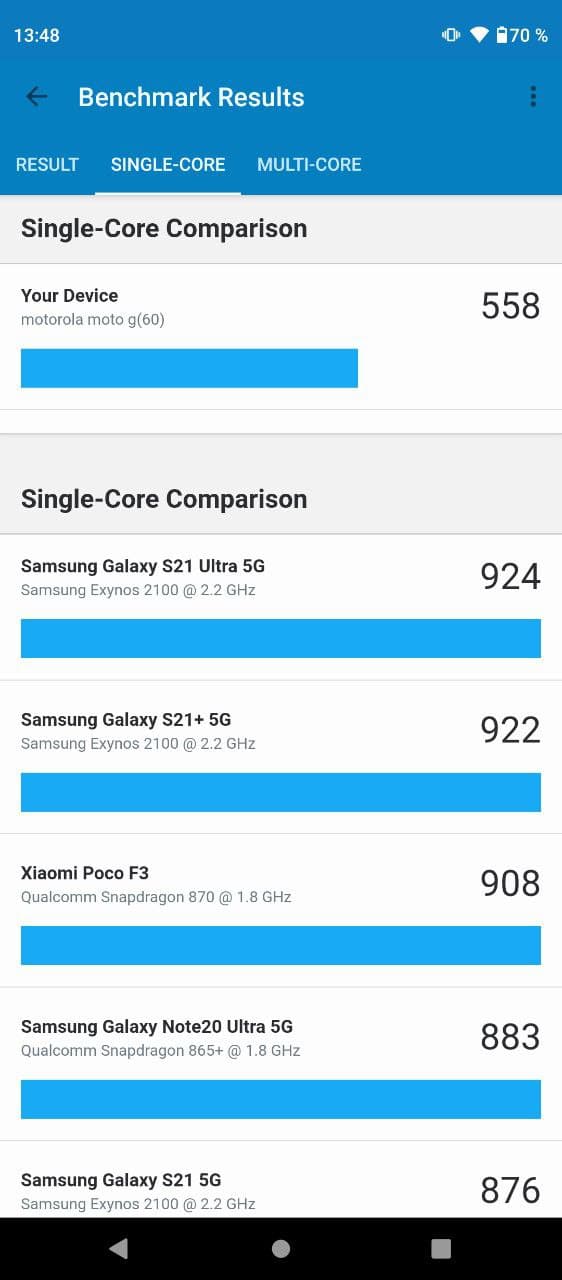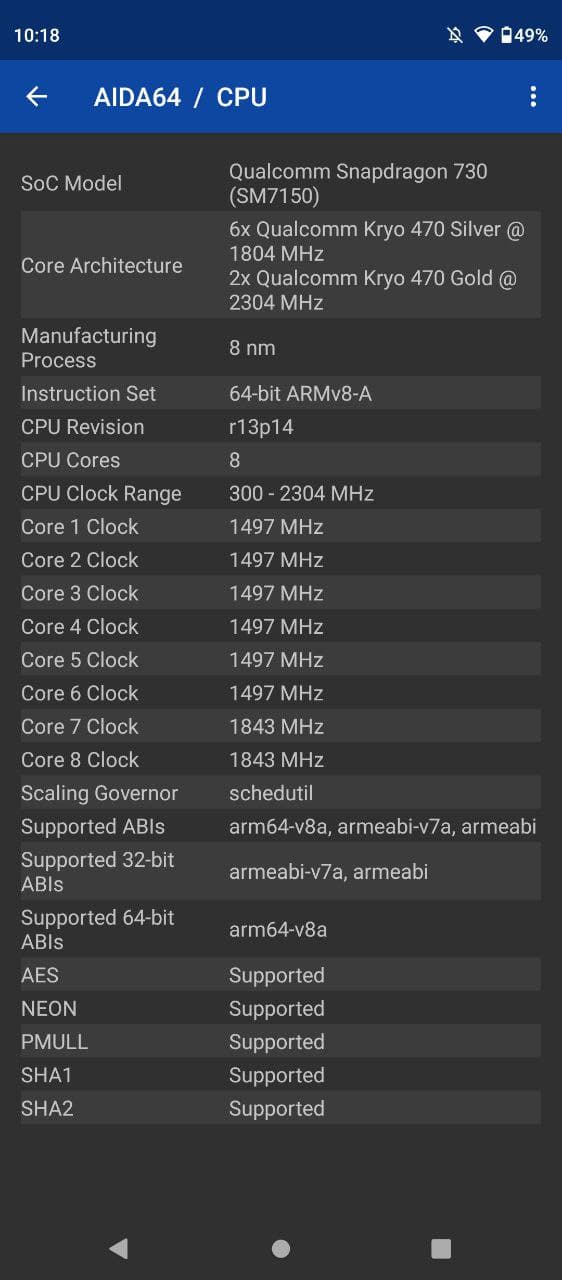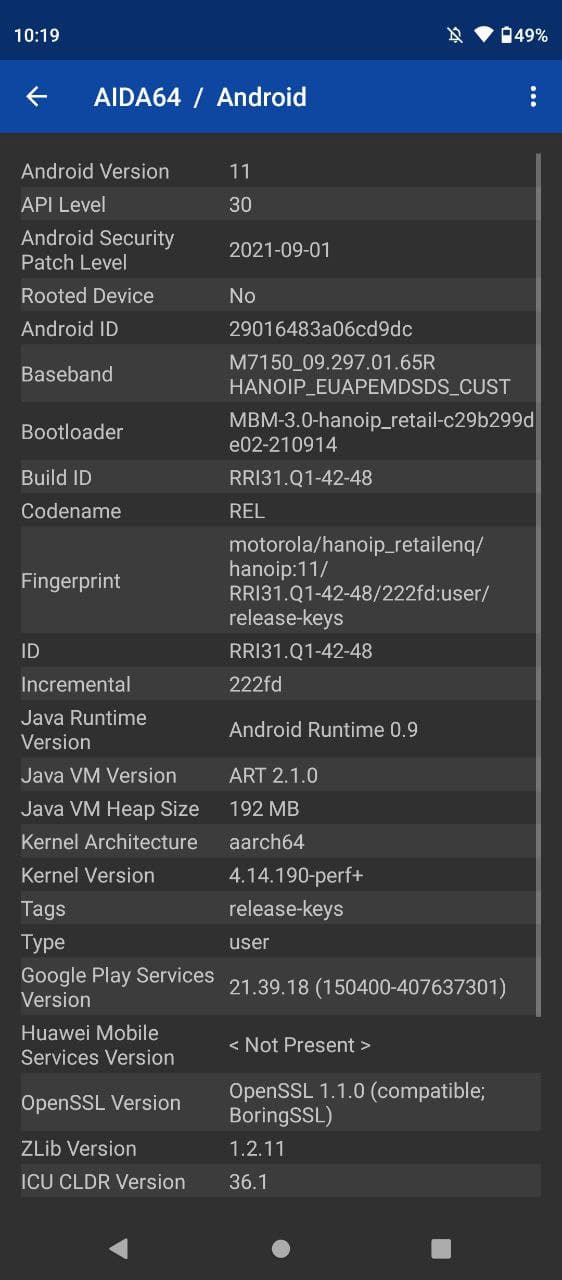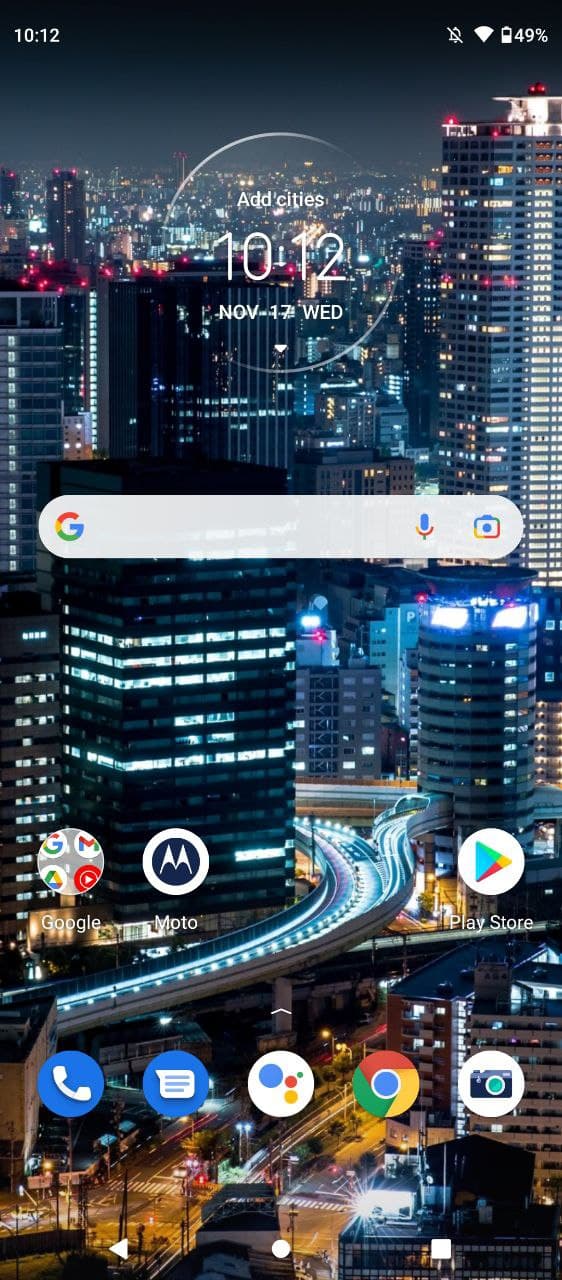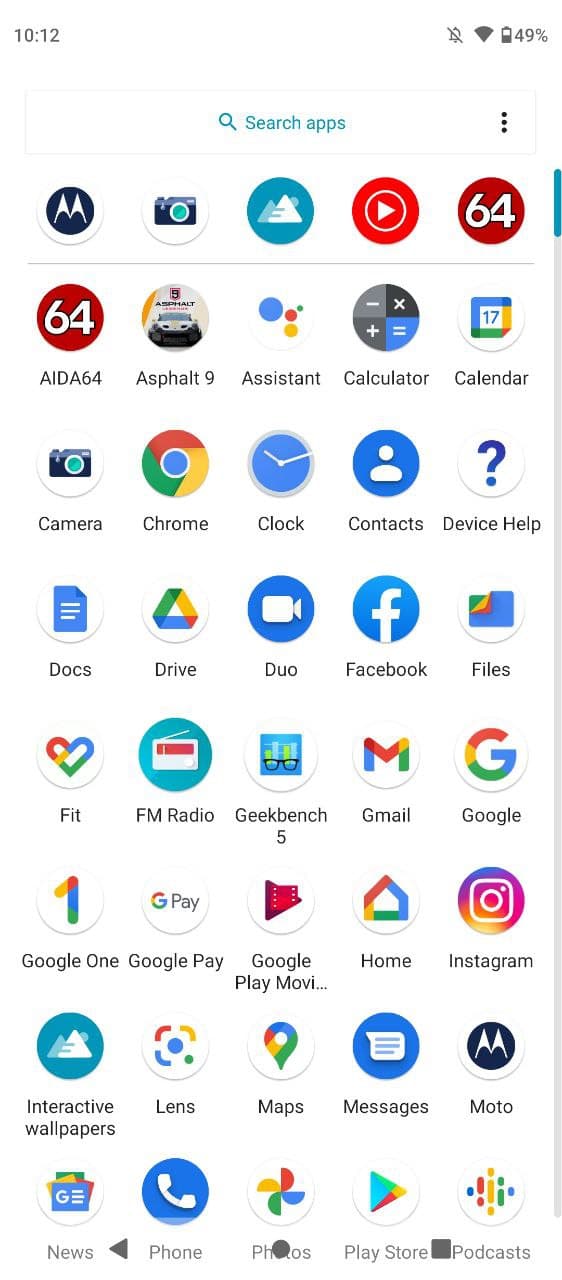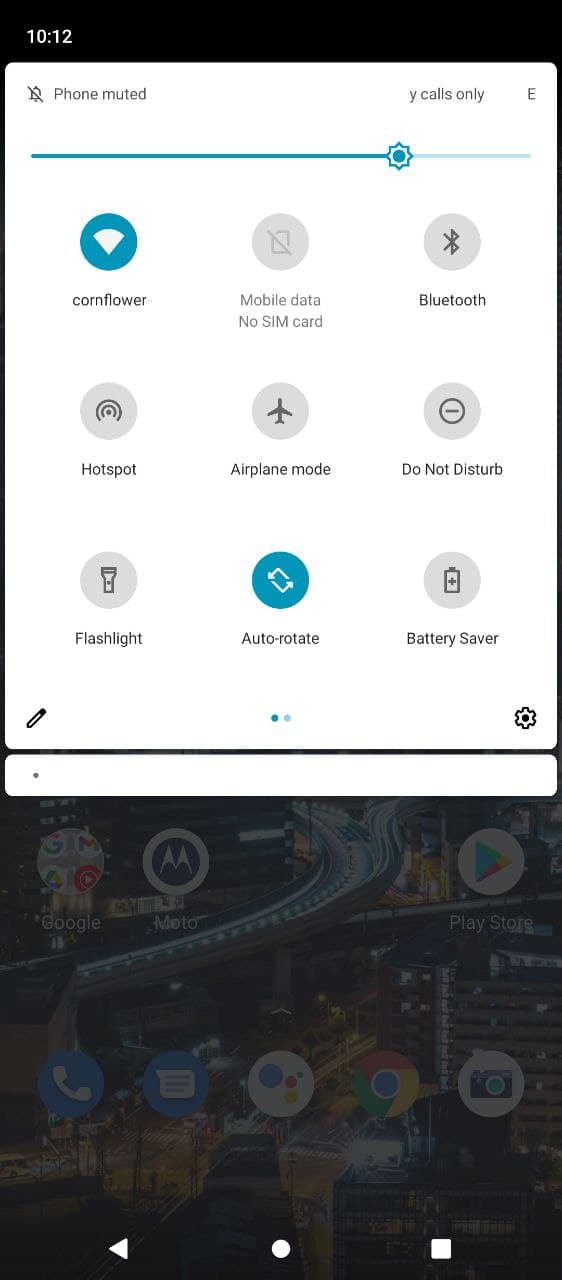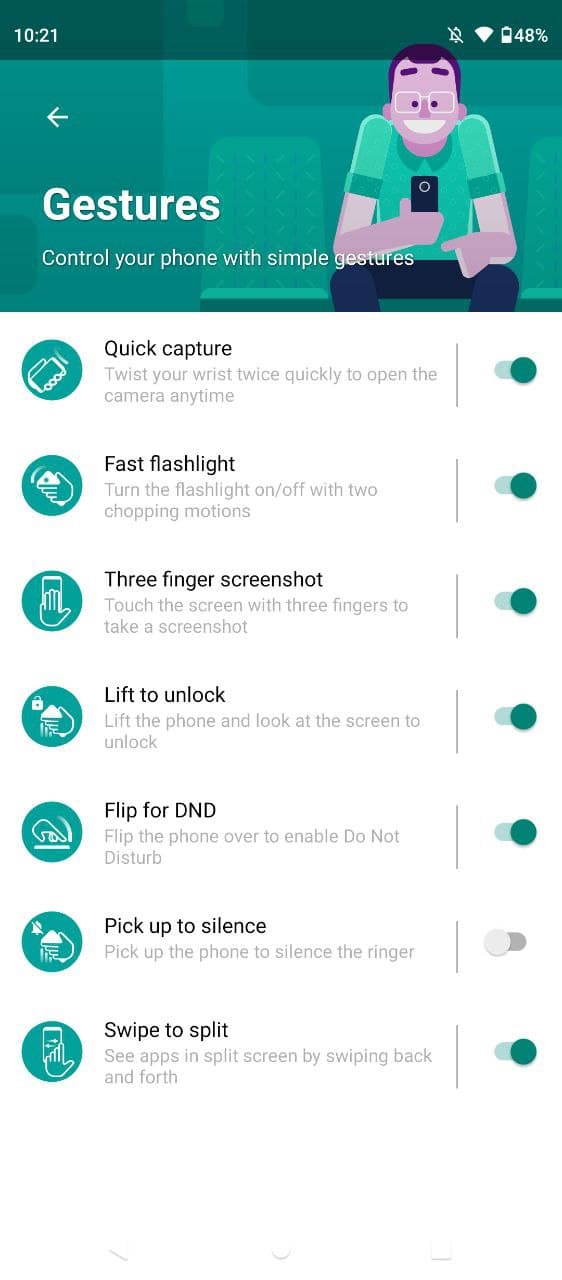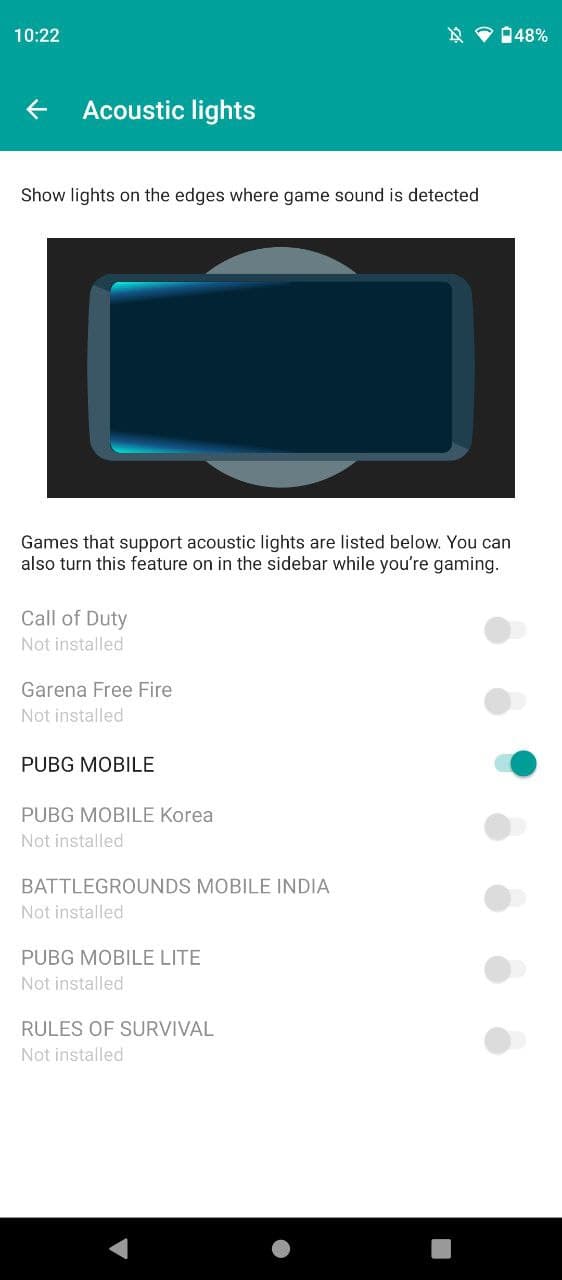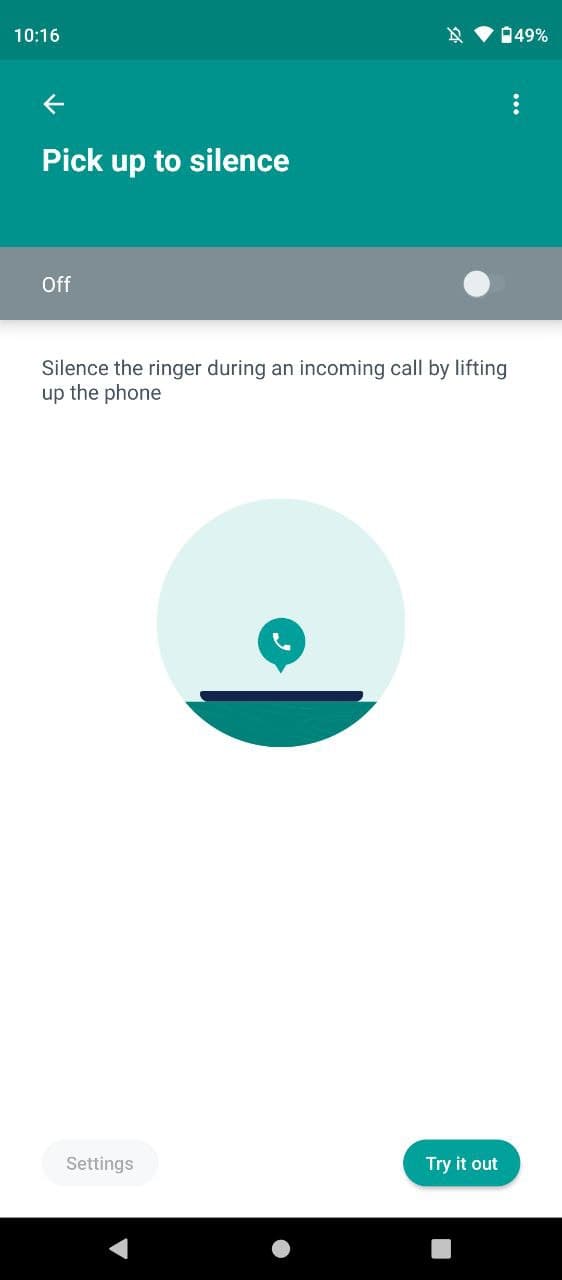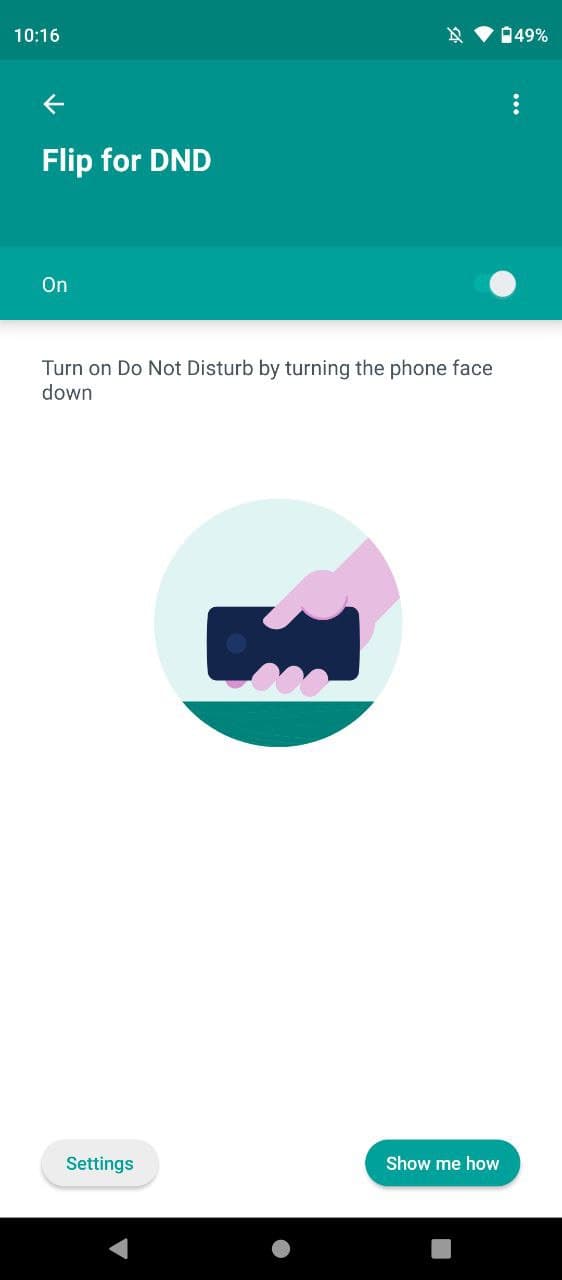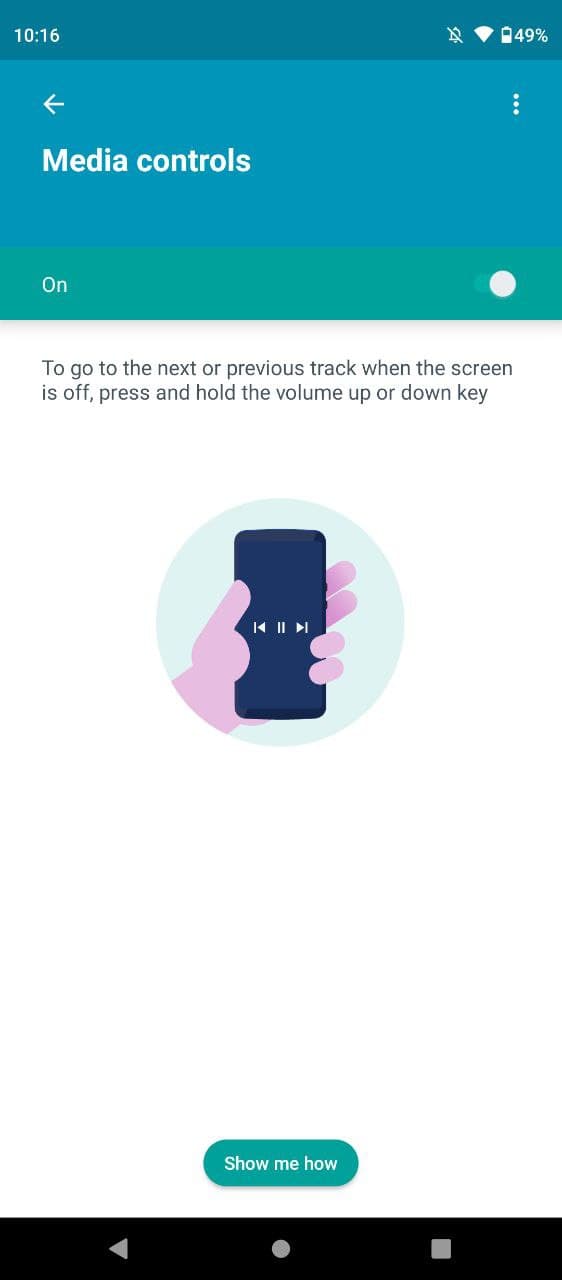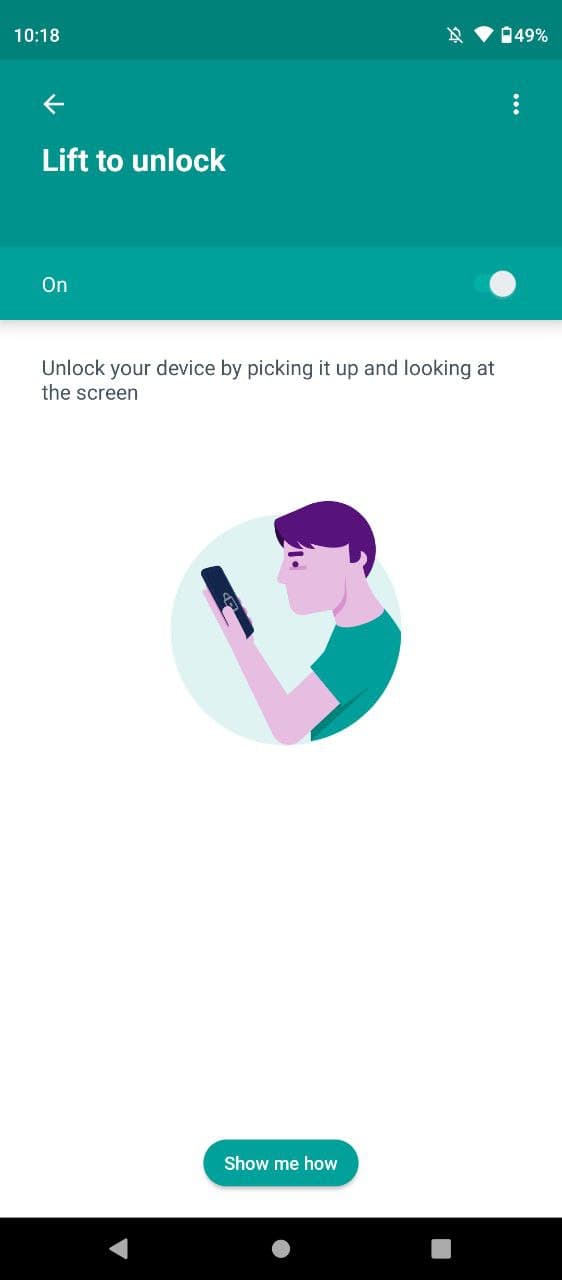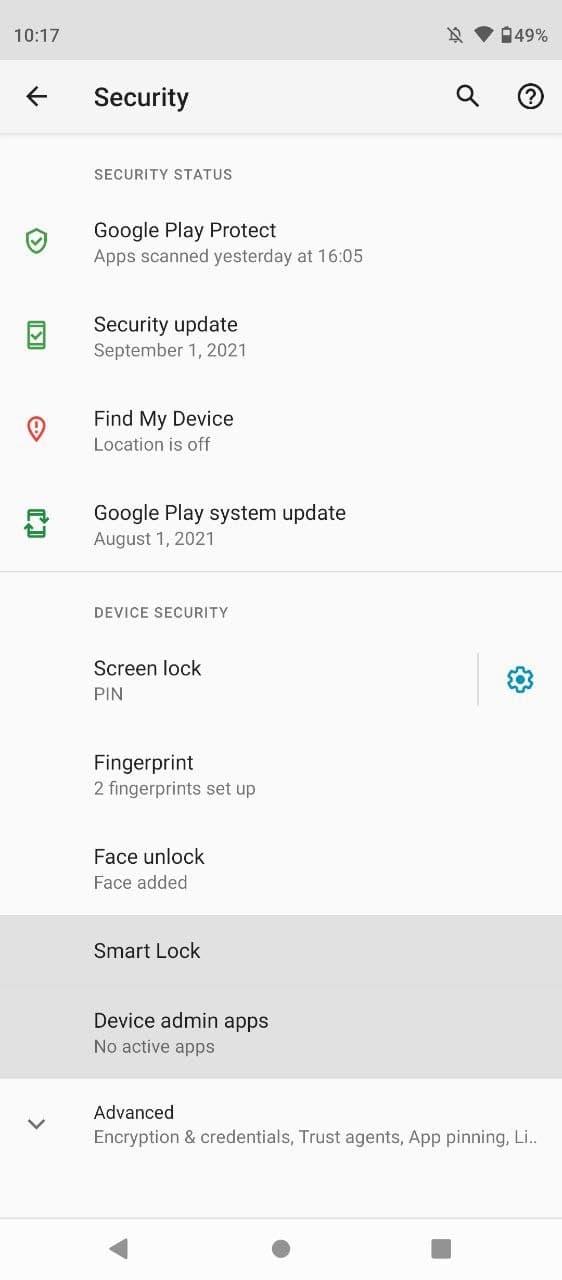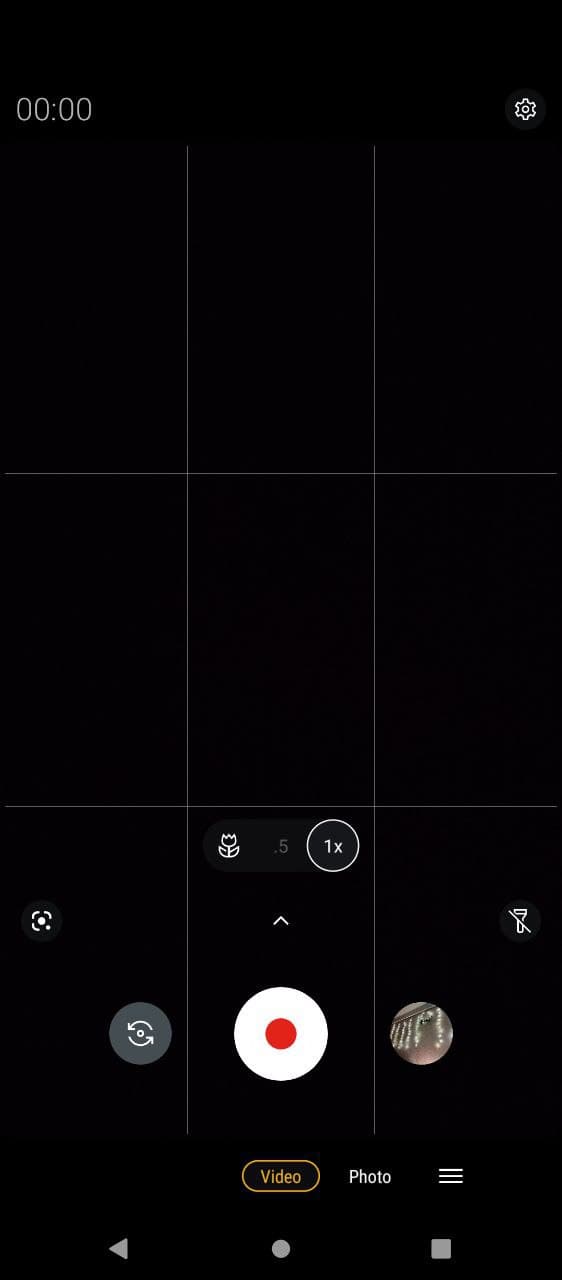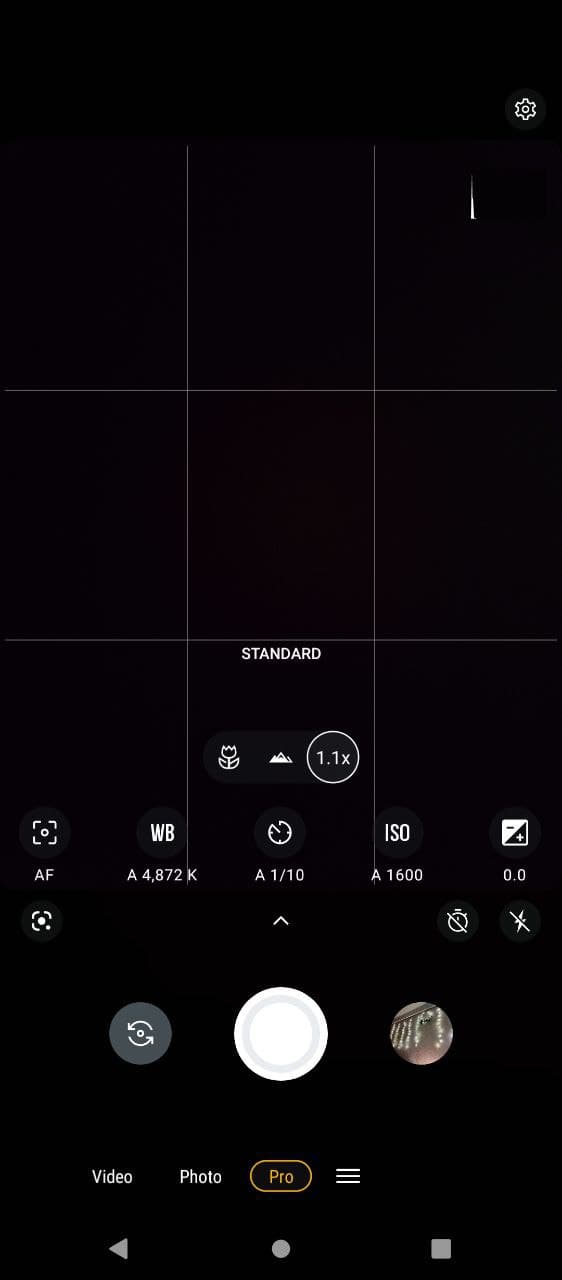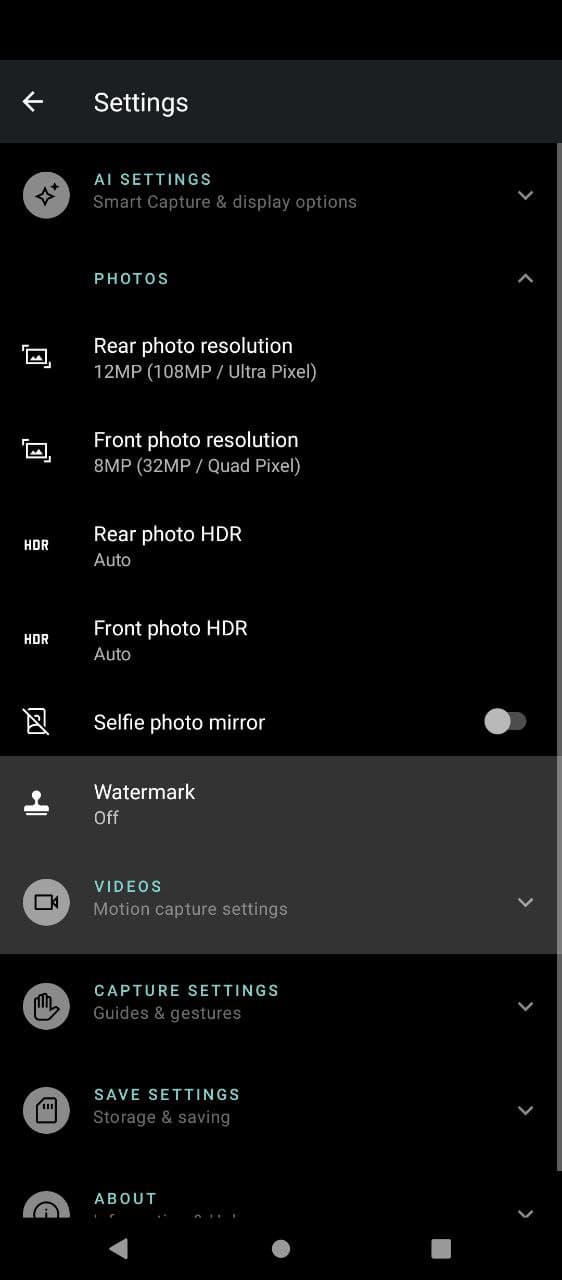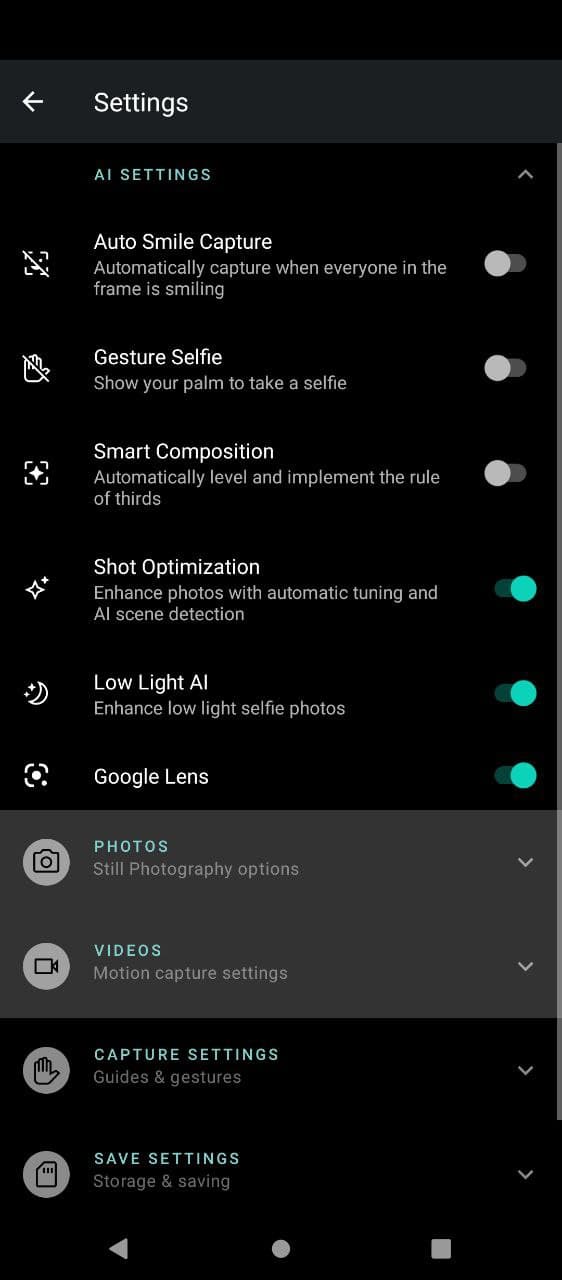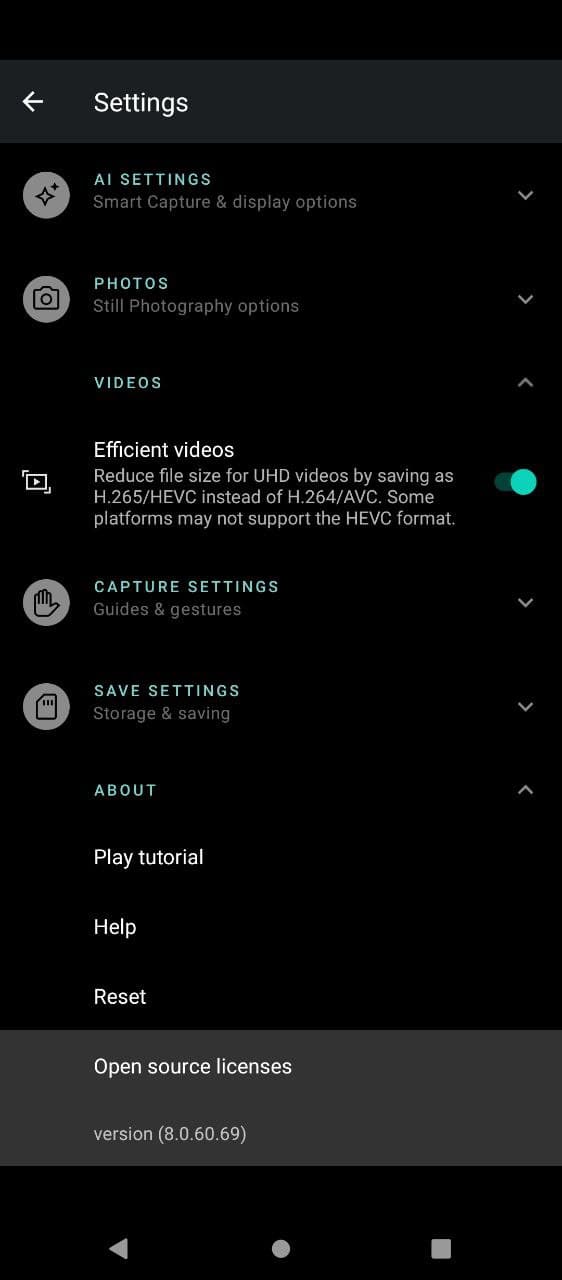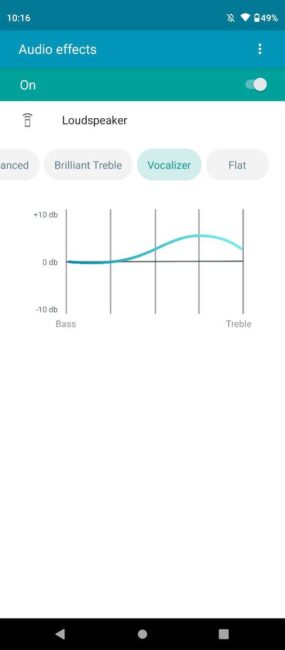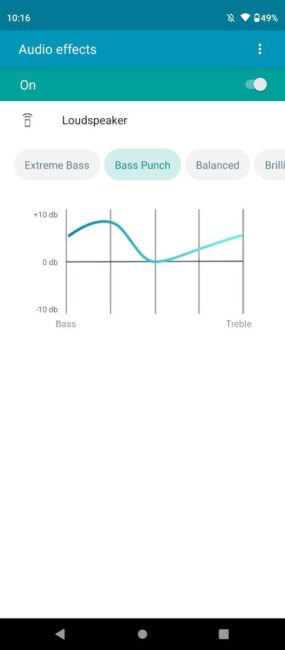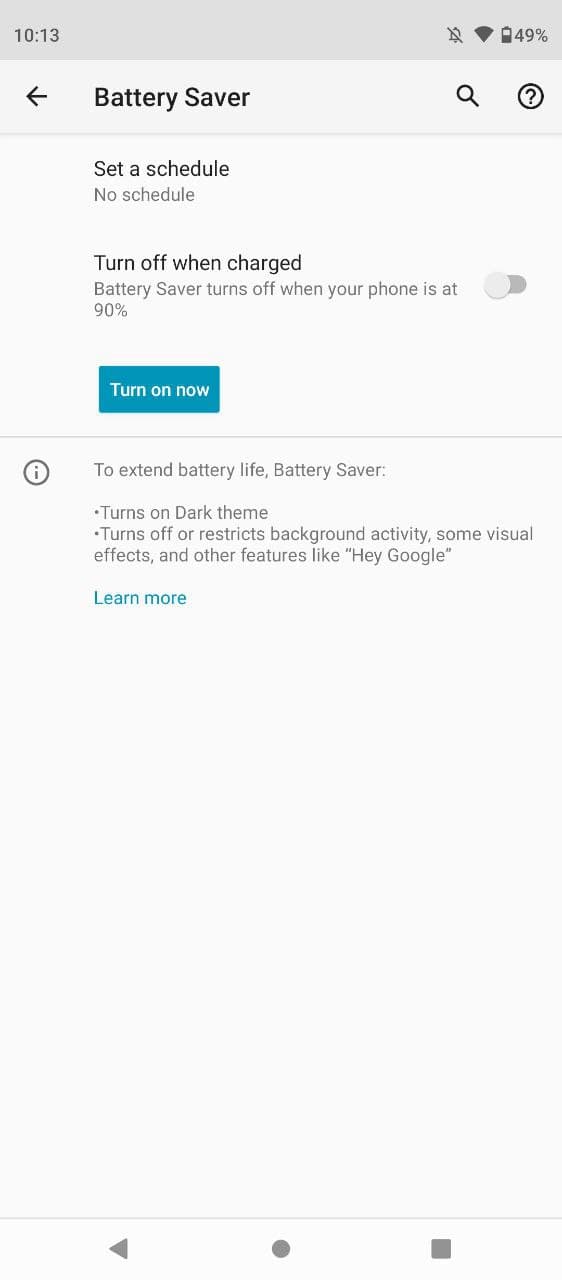At the end of September, Motorola introduced a new mid-range smartphone called the Moto G60. Its main features are a large 120 Hz 6.8-inch display and a 6000 mAh battery. In fact, this is not all that it has up its sleeve. The G60 offers pretty good performance, decent cameras, a flash for selfies, a “clean” operating system, but with branded Moto tools, and a very nice price tag.
Read also:
Full specifications of the Moto G60
- Screen: IPS, 6.8 inches, 2460×1080 pixels, 396 ppi, 120 Hz refresh rate, HDR10, aspect ratio 20.5:9
- Processor: Snapdragon 732G, 8 cores, 2×Cortex-A76 (2.3 GHz) + 6×Cortex-A55 (1.8 GHz)
- Graphics processor: Adreno 618
- RAM: 6 GB
- Storage: 128 GB
- Support for microSD memory cards: up to 1 TB
- Wireless networks: Wi-Fi (2.4 + 5 GHz), Bluetooth 5.0, NFC, GPS, A-GPS, LTEPP, SUPL, GLONASS, Galileo
- Main camera: main module – 108 MP (f/1.9, 2.1 μm), Ultra Pixel technology, 4K video shooting (30 fps), wide-angle – 8 MP (f/2.2, 1.12 μm, viewing angle 118°), macro camera – 2 MP (f/2.4, 1.75 μm), minimum focusing distance – 2.5 cm
- Front-facing camera: 32 MP (f/2.2, 1.4 μm), Quad Pixel technology, 4K video shooting (30 fps), flash
- Battery: 6000 mAh, TurboPower 20 support, Qualcomm Quick Charge 4 compatibility
- OS: Android 11
- Dimensions: 169.6×75.9×9.8 mm
- Mass: 225 g
Price
The Moto G series from Motorola can be attributed to a line of inexpensive devices. However, if you put the whole series together, you can see that it covers almost all price segments from budget options (G20 and G10) to pre-flagmans, like the G100.
The Moto G60 is a classic mid-ranger which has a fairly productive hardware and a set of relevant features, but is still affordable. It costs about $278, but you can find it for as low as $259.
What’s in the box
The full package includes the G60 itself, a silicone case, a Turbo Power 20 charger and a USB Type-C charging cable, a SIM eject tool and a manual.

The case is standard with bumpers along the screen, which will protect the device from damage and scratches. It’s always nice when you get accessories in the box with the smartphone.

Read also:
- Motorola Moto G30 review – Impressive Budget Smartphone with 90Hz Display
- Moto Edge 20 Pro review – Not so Pro
Design and materials
The first thing that attracts attention when you take the Moto G60 in your hands is the weight and dimensions. With dimensions of 169.6 ×75.9× 9.8 mm, the smartphone weighs 225 g and feels like rather weighty and large. After all, the battery requires sacrifices. Nevertheless, thanks to the elongated format (20.5:9), the device is well balanced and comfortable in the hand.
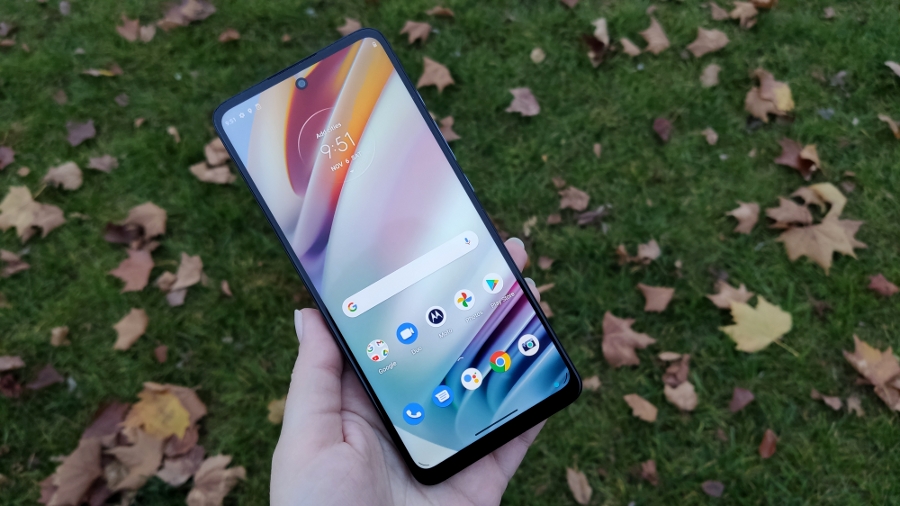
The front panel, of course, is occupied by the display: it occupies 85% of the front part. The bezels around are not the smallest, and the upper edge and the “chin” stand out the most. But, given the size of the screen (6.8 inches), the bezels do not particularly attract attention. The hole for the selfie camera is in the center at the top, under the neat grille of the speaker, and the flash is located closer to the upper left corner under the glass.

Although the body of the Moto G60 is plastic, the design of the back is very similar to a glass panel. A glossy texture with a 3D effect and a gray-steel substrate create the effect of a semi-precious stone. I saw something similar in Redmi Buds 3 Pro, where the touch control panel was also like that. No wonder the color of the G60 is called Dynamic Grey. But there’s a side effect: it’s a fingerprint magnet.

In the upper left corner there is a triple main camera with a flash, additionally highlighted in turquoise. Slightly to the right of the camera is a fingerprint scanner, slightly recessed into the body and with the brand logo. At the very bottom is some technical info. But, due to the peculiar three-dimensional design, the inscriptions and pictograms are almost invisible, which, in my opinion, has a positive effect on the appearance of the smartphone.

The edges of the device are also plastic and painted in the main color, but, unlike the case, their texture is simply glossy, without the glass effect. Thanks to the gray color, a contrasting camera unit and the absence of visible markings, the Moto G60 looks interesting and harmonious. The build quality is excellent. In addition, the materials have water-repellent properties, so small splashes of water or rain are not a problem But this does not mean full protection from water.

Layout
The main controls are arranged as follows. To the left of the screen there is a slot for a pair of SIM cards or one SIM and microSD. On the right is a power button with a grooved surface, volume buttons, and a voice assistant call button. It is impossible to use it for anything else, but the assistant can be disabled in the settings.
On the upper edge there is a 3.5 mm audio jack and a hole for a microphone. On the bottom is the main speaker, a hole for another microphone, as well as a USB Type-C charging port.
The fingerprint scanner is located at the back, typical for mid-range Motorola smartphones. It might be more convenient if the fingerprint sensor was mounted in the power button, but from the design point it makes total sense.

Read also:
Display
The screen of the Moto G60 is represented by a 6.8-inch IPS 2460×1080 screen with a pixel density of 396 ppi and an aspect ratio of 20.5:9. 120 Hz refresh rate and HDR10 serve as a nice juicy bonus. 120 Hz in an affordable smartphone is a reality now, but it isn’t widespread.
 There are three refresh rate modes: standard 60 Hz, 120 Hz, as well as an automatic mode that uses AI to analyze the type of content and adjust the optimal refresh rate of the screen. A kind of balance between a smooth picture and a reasonable charge consumption. But, given the large capacity of the battery, I constantly used 120 Hz with no issues.
There are three refresh rate modes: standard 60 Hz, 120 Hz, as well as an automatic mode that uses AI to analyze the type of content and adjust the optimal refresh rate of the screen. A kind of balance between a smooth picture and a reasonable charge consumption. But, given the large capacity of the battery, I constantly used 120 Hz with no issues.
Of course, it is possible to switch to a dark theme, apply auto brightness, and also set one of the available color rendering modes (natural colors, bright or saturated). One of the interesting things is that in the Moto G60 you can choose or create your own UI style and display info on the locked screen.
The G60 display, in general, is very good – the color reproduction, regardless of the selected mode, is pleasant, thanks to the support of 120 Hz, the interface is smooth, and the viewing angles are decent. I would only add a little more brightness as it’s hard to use it outdoors.

Hardware and wireless connections
The Moto G60 is powered by an 8-core Snapdragon 732G, which consists of two productive Cortex-A76 cores with a maximum clock speed of 2.3 GHz, as well as six energy-efficient Cortex-A55 with a frequency of 1.8 GHz. The Xiaomi 11 Lite uses the same chipset. Graphics are supported by the Adreno 618 processor. The smartphone has 6 GB of RAM and 128 GB of storage with the possibility of expanding with a microSD to 1 TB. There’s dual-band Wi-Fi (2.4 + 5 GHz), Bluetooth 5.0, NFC, as well as GPS, A-GPS, LTEPP, SUPL, GLONASS, Galileo.
Overall it’s a pretty nimble smartphone that copes with everyday tasks and multitasking without problems, as well as with the heaviest of games. Asphalt 9 or PUBG run at high graphics settings. As for the heating, in 40 minutes of the game, the Moto G60 only barely warms up in the area of the upper edge and the cameras. With regular use no heating occurs at all. No throttling either.
Software
 The software part of the Moto G60 is represented by “pure” Android 11 without any shells, but with typical Motorola features. For convenience, they are collected in one place (which is called Moto), but, however, they are duplicated in the settings in the corresponding sections. With the help of the tools presented here, you can customize the device for yourself (wallpapers, styles, etc.), as well as customize various curious gestures. For example, quickly turn on the camera by twisting the smartphone twice in your hand, or turn on the flashlight with two “chopping” movements. Here you can also find tips and visual instructions on the main functions of the smartphone, configure the Moto Gametime gaming utility, turn on the equalizer and split-screen function, activate an attentive display that will not dim while the user is looking at it, and so on.
The software part of the Moto G60 is represented by “pure” Android 11 without any shells, but with typical Motorola features. For convenience, they are collected in one place (which is called Moto), but, however, they are duplicated in the settings in the corresponding sections. With the help of the tools presented here, you can customize the device for yourself (wallpapers, styles, etc.), as well as customize various curious gestures. For example, quickly turn on the camera by twisting the smartphone twice in your hand, or turn on the flashlight with two “chopping” movements. Here you can also find tips and visual instructions on the main functions of the smartphone, configure the Moto Gametime gaming utility, turn on the equalizer and split-screen function, activate an attentive display that will not dim while the user is looking at it, and so on.
As for third-party software, there are only basic Android tools, Google services and branded Moto chips. The UI is quite simple and intuitive, and the lack of software clutter is only a plus.
Unlocking

The set of unlocking methods is standard: you get a face scanner and a fingerprint sensor. Face control works, unblocking with its help happens quite quickly. In the settings there is a way to turn on the face scanner when picking up the device, which is very convenient – no need to activate the screen additionally. In this case, the unlocking takes a little longer – the smartphone first processes the data about the change of position, and then only turns on the scanner. But it takes literally a fraction of a second. In the dark, the scanner does not work.
 The fingerprint scanner, which is located on the back of the smartphone, is capacitive, which means it just works. When you take the G60 in your hand, the power button falls under your thumb, and the scanner is right under your index finger.
The fingerprint scanner, which is located on the back of the smartphone, is capacitive, which means it just works. When you take the G60 in your hand, the power button falls under your thumb, and the scanner is right under your index finger.
Cameras

The rear camera consists of three lenses. Among them is a 108 MP main module with an aperture of f/1.9, Ultra Pixel 9-in-1 technology (real resolution of 12 MP) and the ability to shoot videos in 4K at 30 fps, an 8 MP wide-angle with an aperture of f/2.2 and a viewing angle of 118°, as well as a 2-megapixel macro camera with an aperture of f/2.4 and a minimum focal length of 2.5 cm.
The following shooting modes are available in the camera app:
- photo: standard photo, Portrait, Night photo, Spot color, Panorama, Group selfies (for the front camera, a kind of a panoramic image), Pro-mode, Ultra-Res 108 MP, document Scanner, Macro
- video: standard video mode, time Lapse, Spot color, Double shot (on the main and front camera at the same time)
In addition, filters, Google Lens, intelligent scene recognition, as well as a simple beatification for selfies.
The main sensor pleasantly surprised me. During the day, the pictures are detailed, clear, and the color reproduction is close to natural, since the contrast is soft and does not stretch forcibly. I would like to note that with the background blurring the camera copes perfectly, and the very intensity of the blur can be selected.
At night, of course, the quality decreases, but with patience, you can get pretty good shots thanks to the night shooting mode which captures more light and shows more details. Below are some examples that will allow you to compare the normal shooting mode with the night mode. Night photos are on the right.
But in conditions when the lighting is minimal, it is difficult to count on a decent result. But here you can clearly see how much the night mode is trying to save the situation by highlighting the frame and capturing more elements, but at the same time losing contrast and clarity even more.
And here you can see the work of the main sensor in different conditions.
The 8-megapixel wide-angle lens, as always, only works in the daytime. Yes, there is noise and blurred edges of the pictures, but everything is quite good in the center of the composition. There is a distortion of perspective at the edges, but, in my opinion, it is not critical – there are smartphones with a more pronounced issues. At night, its capabilities are unlikely to satisfy a mobile photographer – there are minimal details in the darkened areas, and illuminated objects stand out too much against their background.
Photos from the wide-angle lens
There’s also macro, but only 2 Mp. The key to the success is the perfect light and immobility of the object.
The selfie camera is represented by a 32-megapixel module with a light sensitivity of f/2.2, Quad Pixel technology (4-in-1, we get pictures with a resolution of 8 MP at the output) and, importantly, a flash. The front-facing flash is generally a rare sight in smartphones, so its presence in the Motorola G60 is a definite plus. Especially for those who take selfies or videos on the selfie camera with a certain constancy.
With sufficient natural light, you can use the front-facing camera to take pretty decent selfies with soft color reproduction and good detail. In low light, textures are blurred and noises appear, which is quite natural. The flash illuminates the object directly in front of the camera well, but the background turns out to be grainy and with a lot of noise. In general, a flash can significantly improve a selfie or video with some lack of light, but if the lighting is not so good at all, it’s not enough. As for the video, the selfie camera also supports shooting in UHD format at 30 fps; 60 fps is only available for Full HD.
Sound
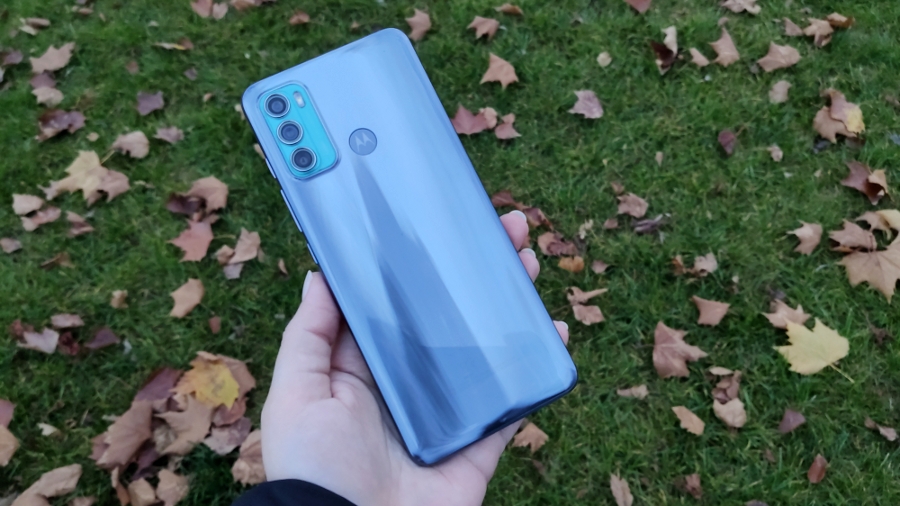 The Moto G60 has a single speaker, which is traditionally located on the bottom eddge. The sound is quite standard – there is plenty of volume, at maximum volume the sound does not break. Not the best way to enjoy music. But for games, YouTube, hands-free communication, etc the sound is more than adequate.
The Moto G60 has a single speaker, which is traditionally located on the bottom eddge. The sound is quite standard – there is plenty of volume, at maximum volume the sound does not break. Not the best way to enjoy music. But for games, YouTube, hands-free communication, etc the sound is more than adequate.
In headphones, the sound is good (although it depends more on the headphones themselves), without any surprises. There is an equalizer. You can even use your old wired headphones with no problems.
Read also:
- OPPO Reno 6 Pro 5g review: So good I want one now
- Vivo X70 Pro+ review: Powerful beast with fantastic cameras
Battery life

The battery of the Moto G60 is very decent: 6000 mAh. The charge lasts for a long time. During testing, I charged it on average once every 2-3 days, depending on what I was doing. But during the day I was not able to kill my smartphone even once, even taking into account mobile games, social networks, web surfing, messengers and the like.
In addition, the G60 supports TurboPower 20 fast charging and is compatible with Qualcomm Quick Charge 4. But, unfortunately, I did not get a “native” charger for 20 watts.
Verdict
The Moto G60 turned out to be quite an interesting and promising mid-ranger of the G-series. The smartphone has a pleasant design and convenient format, a good IPS display with 120 Hz, decent performance for its segment, good cameras, simply amazing battery life and a completely sane price tag. Separately, I would like to note a nice “clean” software with convenient Moto features on top, a 3.5 mm connector, a flash for the front-facing camera and support for memory cards up to 1 TB.

But there were some issues after all. There is a little lack of brightness, and I would also like the assistant call button to be used in some other way. But there are no perfect smartphones, no matter what price segment we are talking about. Anyway, in my opinion, the G60 is a good option for those who are looking for a workhorse that probably won’t have to be charged every day, with a 120 Hz screen, a nice UI and at a good price.
Read also:
- Xiaomi 11T review: Alternative to a Flagship?
- Realme GT Master Edition vs Xiaomi 11 Lite 5G NE vs Samsung Galaxy A72: 2021’s hottest mid-rangers go head to head

Subscribe to our accounts:
